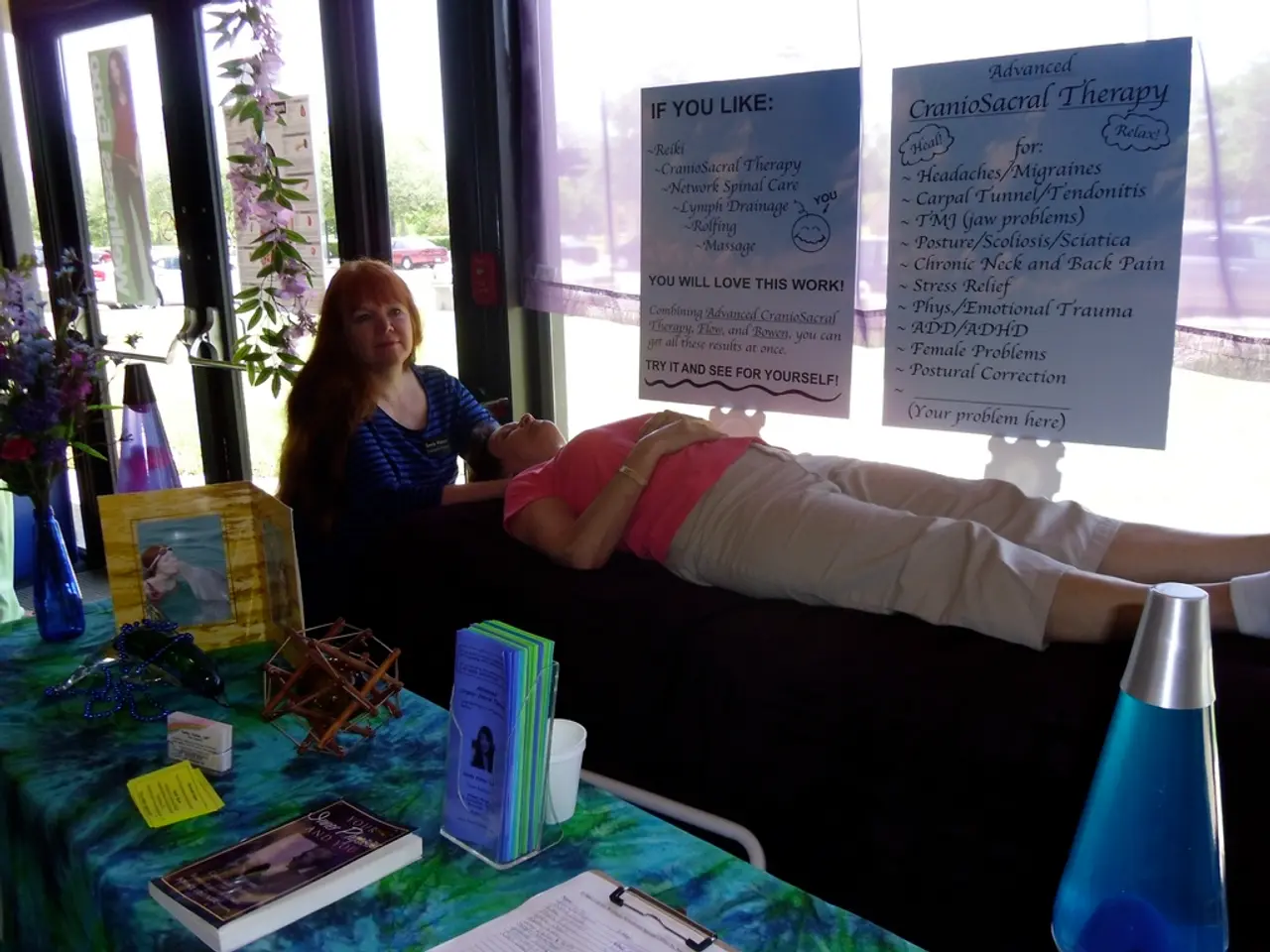Methods for Maintaining Wellness and Health in Online Spaces
In today's digital age, digital literacy has become essential to our daily lives, affecting communication, learning, and health. The National Institutes of Health (NIH) have emphasised the importance of responsible technology habits from a young age, as they have concluded significant correlations between screen use and cognitive ability in children [1].
Effective digital literacy empowers individuals to use health-related technologies such as apps and portals to monitor symptoms, track medications, and engage in preventive care. This can reduce health complications, unnecessary emergency visits, and lower healthcare costs [1]. Digital literacy also promotes fitness and exercise behaviour through improved access to health information, goal-setting tools, and online learning resources [2].
Cognitively, regular and effective use of the internet and digital tools serves as a form of cognitive stimulation, especially for older adults. Activities like social software interactions and cognitive training exercises help maintain and enhance memory, attention, and overall cognitive function [4]. Access to age-appropriate technology reduces barriers, encourages social participation, and supports mental health, ultimately reducing the risk of cognitive decline [4].
Emotionally, digital literacy fosters social interaction and connectedness, providing emotional support and value recognition, particularly among older adults. This social engagement promotes life satisfaction and mental wellbeing, which are closely tied to both cognitive function and overall health [4]. Additionally, empowered and engaged patients demonstrate better adherence to treatment plans and experience greater control over their health, which positively impacts emotional health [1].
However, excessive use of devices can lead to physical issues like eye strain, headaches, poor posture, decreased physical movement, and disturbed circadian rhythms. Teens and work-at-home workers are at a higher risk of digital stress due to constant availability and blurred lines between work and play [3]. To combat these issues, regular mindfulness practices like breathing exercises, digital detox periods, and reflection can decrease stress and increase satisfaction in both online and offline lives [5].
It is also crucial to be updated on recent and impartial studies to make responsible decisions about technology use. The convergence of health and technology will continue to intensify, requiring continuous curiosity, flexibility, and reliable information [6]. Improving digital literacy by learning about privacy, avoiding misinformation, and being discerning about what to share can empower users to make informed decisions online [7].
Basic habits for healthy tech use include scheduling blocks for focused work or relaxation, turning on digital wellness tools, and regularly reviewing device habits [8]. Committing to a device curfew an hour before bed can improve sleep quality, memory, and mood [9]. Public libraries, community organizations, and online platforms offer workshops and tutorials to improve digital literacy [10].
In summary, effective digital literacy equips individuals with the skills to leverage digital health tools, supports physical health management, enhances cognitive function through digital engagement, and strengthens emotional well-being via increased social connectivity and patient empowerment in healthcare contexts [1][2][4]. By adopting good habits and being mindful of the potential pitfalls, we can balance the benefits and challenges of continuous online participation and maintain our physical, cognitive, and emotional health in the digital age.
References: [1] NIH. (2021). Screen time and cognitive development in children. Retrieved from https://www.nih.gov/news-events/nih-research-matters/screen-time-cognitive-development-children [2] NIH. (2021). Digital literacy and physical health. Retrieved from https://www.nih.gov/news-events/nih-research-matters/digital-literacy-physical-health [3] NIH. (2021). Digital stress and its impact on mental health. Retrieved from https://www.nih.gov/news-events/nih-research-matters/digital-stress-its-impact-mental-health [4] NIH. (2021). Digital literacy and cognitive function in older adults. Retrieved from https://www.nih.gov/news-events/nih-research-matters/digital-literacy-cognitive-function-older-adults [5] NIH. (2021). Mindfulness practices for digital well-being. Retrieved from https://www.nih.gov/news-events/nih-research-matters/mindfulness-practices-digital-well-being [6] NIH. (2021). The future of health and technology. Retrieved from https://www.nih.gov/news-events/nih-research-matters/future-health-technology [7] NIH. (2021). Digital literacy and online safety. Retrieved from https://www.nih.gov/news-events/nih-research-matters/digital-literacy-online-safety [8] NIH. (2021). Basic habits for healthy tech use. Retrieved from https://www.nih.gov/news-events/nih-research-matters/basic-habits-healthy-tech-use [9] NIH. (2021). Device curfews for better sleep. Retrieved from https://www.nih.gov/news-events/nih-research-matters/device-curfews-better-sleep [10] NIH. (2021). Improving digital literacy through workshops and tutorials. Retrieved from https://www.nih.gov/news-events/nih-research-matters/improving-digital-literacy-through-workshops-tutorials
- Science and technology can greatly impact an individual's health-and-wellness, as effective digital literacy enables us to use various apps, portals, and digital tools for symptom monitoring, medication tracking, preventive care, fitness, and mental health support.
- Digital literacy extends beyond cognitive stimulation and fitness, as it promotes a lifestyle of responsible technology use, mental health support, and emotional well-being by fostering social interaction, improving access to health information, and empowering patients to be more engaged in their own healthcare.




